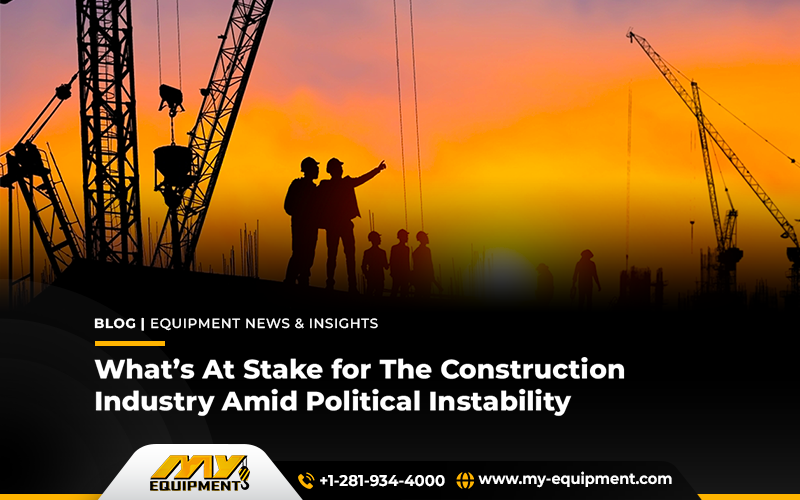For the past couple of months, the political climate in the USA has been quite buzzing due to the upcoming midterm general election. This agitated environment normally threatens many industries and affects their ongoing flow. The construction and equipment industry is no exception where this political hustle and bustle is unaffected. This vicious cycle repeats every four years when the elections are on the hit, but this time it seems something special due to the likelihood of policy reformations regarding the construction and infrastructure bills.
What are the current spending trends in construction?
It has been witnessed for the last few months that the construction spending has been lowered to a noticeable percentage. The U.S. Census Bureau reports a 0.1% decrease in construction spending in May 2024, compared to April. This decline in spending has been seen in residential and commercial construction projects, ultimately impacting the construction equipment industry as well.
Residential Construction
There has been a noticeable decrease in spending on residential construction. May 2024 saw a 1.2% decrease in new single-family house spending from the previous month. This decline was already expected after the increase in the mortgage rates which rose by 7.3% on average. Potential buyers have been discouraged by this high rate, and new construction projects have been delayed.
Non-Residential Construction
When it comes to non-residential construction, an inconsistency has also been seen with a decrease of 2.5% in spending. On the other hand, data centres have seen a sharp increase in demand, with building expenditures rising by 69% in the last year due to the work-from-office trend revival.
Manufacturing Facility
Although many big equipment manufacturers have initiated building new manufacturing plants and expanding their business in other states, the overall manufacturing sector is also in decay. For example, a big heavy equipment company has recently installed its facility in Texas, that will be supporting the local economy as well.
In some cases, there have been project delays and cancellations as a result of the predicted boom in electric vehicle production not completely materializing. For example, compared to the prior year, construction spending on EV-related facilities decreased by 4.3%.
Infrastructure and Renewable Energy
The Infrastructure Investment and Jobs Act has stimulated the growth of infrastructure projects. Over the previous year, spending in this sector grew by 3.8%. Utility-scale battery storage project construction has increased by 9.1%, while solar project construction has increased by 8.2%.
Trends in Employment in Different Regions
Between May and June 2024, the construction sector added 27,000 jobs, a significant rise over prior trends. Both the residential and non-residential sectors are seeing growth which is a good sign for the industry. There are clear regional differences: employment has increased in states like Alaska and Hawaii by 5.7% and 4.9%, respectively. Whereas, states like Pennsylvania and New York have grown more slowly, with employment in the construction industry rising by just 2.3% and 1.8%, respectively. All these numbers might fluctuate after the general elections when the new bills will be released and political instability will settle down.
Stay Ahead
The political climate in the USA might not directly impact the construction and equipment industry but passively, it will. The policy reformation will anyhow directly impact the industry. The rise in taxes and the price surge in gas or fuel will be influencing equipment purchasing. Furthermore, the uncertain political hustle may also disrupt the supply chain, leading to a rise in equipment prices as well. However, anything to predict in favour or against the industry will be too early. The industry experts and stakeholders are however advised to make plans accordingly and stay ahead of the hurdles coming their way.


 1400 Broadfield Blvd, Houston, TX 77084,
USA.
1400 Broadfield Blvd, Houston, TX 77084,
USA. omer@my-equipment.com
omer@my-equipment.com